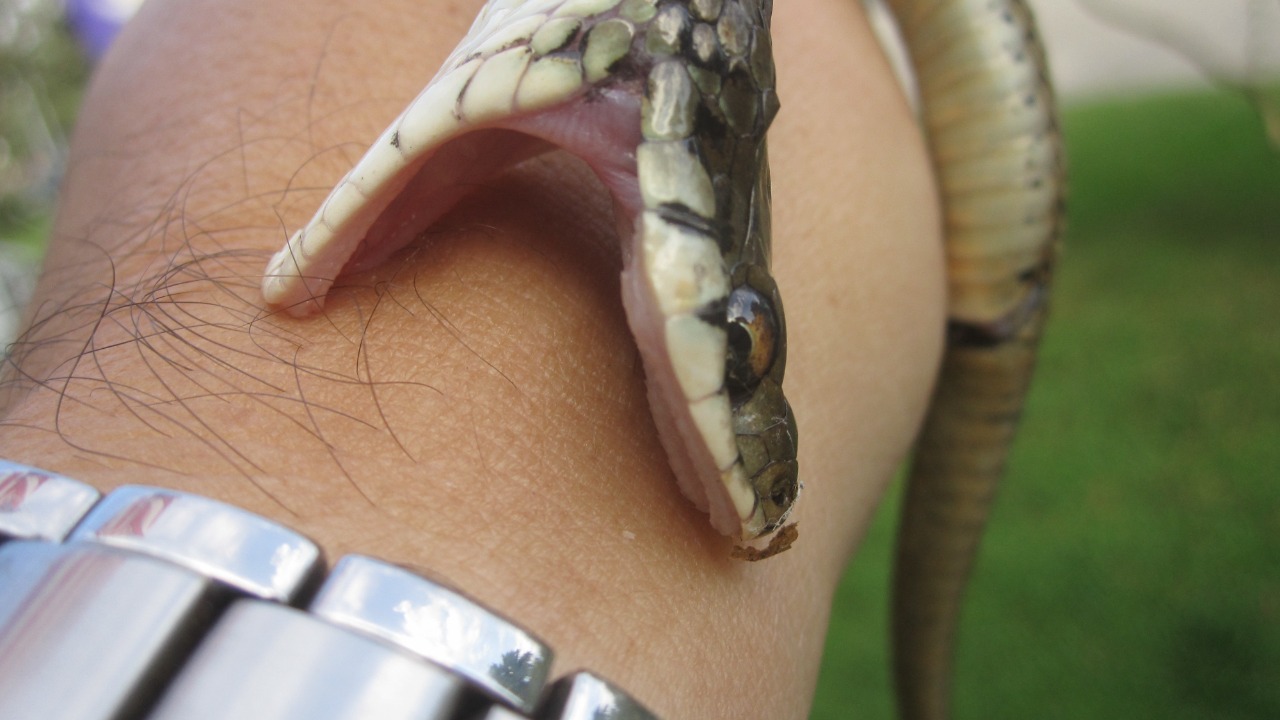
Actor Walton Goggins recently shared a harrowing experience while filming a scene for the TV series ‘White Lotus’—he was bitten by a snake. This real-life incident underscores the genuine risks posed by venomous snakes, especially in unpredictable environments like film sets or outdoor work sites. Understanding how snake bites work and the dangers they present is crucial, not just for those in Hollywood but for anyone who might encounter these reptiles in the wild.
The Mechanics of a Snake Bite
Snake bites are a complex biological process involving the precise delivery of venom through specialized fangs. These fangs act like hypodermic needles, injecting venom deep into the victim’s tissue. The mechanics of this process are fascinating, as detailed in a recent report. The snake’s anatomy plays a crucial role in this efficiency; muscle contractions help propel the venom from the glands through the fangs and into the prey. This system ensures that the venom is delivered quickly and effectively.
Not all snake bites result in venom injection, however. Some bites are “dry,” meaning no venom is released. The distinction between dry bites and envenomated ones is significant, as it affects the severity of the bite’s consequences. According to the same source, dry bites occur when a snake chooses not to inject venom, often as a warning or due to depleted venom reserves. Understanding these differences is essential for assessing the potential danger of a snake bite.
Composition and Immediate Effects of Venom
Snake venom is a complex cocktail of proteins and enzymes, with different types having distinct effects on the body. The most common venom types are hemotoxic and neurotoxic. Hemotoxic venom affects the blood and tissues, causing symptoms like swelling, pain, and tissue damage. Neurotoxic venom, on the other hand, targets the nervous system, potentially leading to paralysis or respiratory failure. The biochemical breakdown of these venoms is intricate, as highlighted in the report.
The immediate physiological responses to a venomous bite can be severe. Rapid swelling and intense pain are common, and tissue damage can occur quickly if the venom is particularly potent. The potency of venom varies significantly across different snake species, with some snakes delivering more toxic bites than others. This variability underscores the importance of identifying the snake species involved in a bite to determine the appropriate medical response.
Risks in Occupational and Outdoor Settings
For outdoor workers, the risk of encountering venomous snakes is a serious occupational hazard. The CDC provides guidance on identifying and avoiding these snakes, emphasizing the importance of awareness and preparedness. Workers in certain environments, such as construction sites or agricultural fields, are particularly vulnerable due to the nature of their work and the habitats they frequent.
Environmental factors can increase the likelihood of snake bites in work zones. Terrain, vegetation, and seasonal activity all play a role in snake behavior and the chances of an encounter. The CDC outlines strategies for minimizing these risks, including wearing protective clothing and being vigilant in areas known for snake activity. Statistics on occupational incidents involving venomous snakes highlight the need for continued education and safety measures in these settings.
Real-World Examples and Human Encounters
Walton Goggins’ experience on the set of ‘White Lotus’ serves as a stark reminder of the unpredictability of snake encounters. As reported in March 2025, Goggins was bitten while filming a scene, illustrating how even controlled environments can pose unexpected dangers. This incident highlights the importance of having safety protocols in place, even in seemingly safe settings like film sets.
The context of Goggins’ snake bite during filming underscores the element of surprise that often accompanies such encounters. Despite the controlled nature of a film set, the presence of a snake led to a real and potentially dangerous situation. This example connects to broader patterns of non-professional exposures to snakes, where individuals may not be prepared for such encounters. Insights from the analysis of snake bites emphasize the need for awareness and preparedness, regardless of the setting.
More from MorningOverview